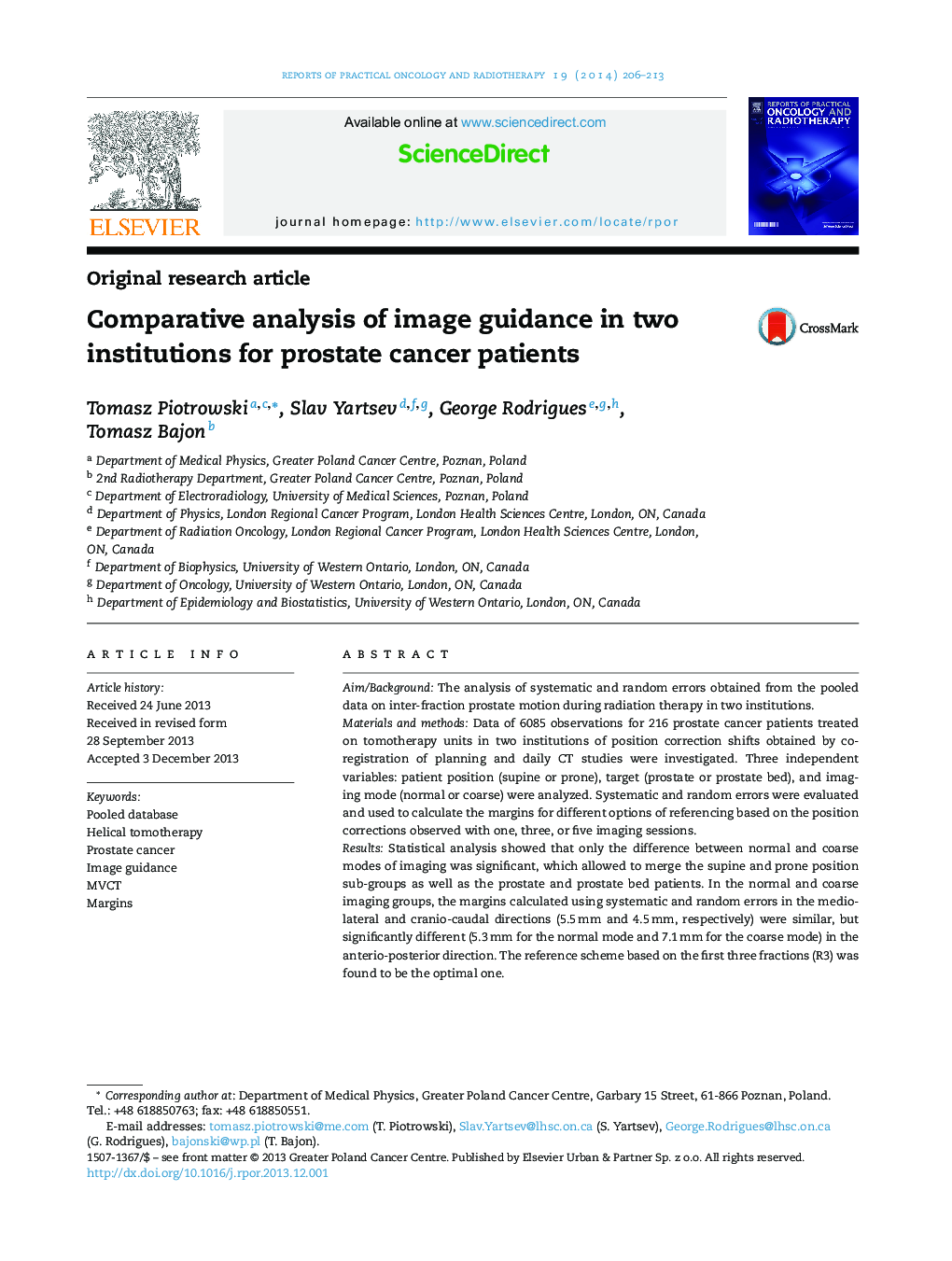| Article ID | Journal | Published Year | Pages | File Type |
|---|---|---|---|---|
| 1855434 | Reports of Practical Oncology & Radiotherapy | 2014 | 8 Pages |
Aim/BackgroundThe analysis of systematic and random errors obtained from the pooled data on inter-fraction prostate motion during radiation therapy in two institutions.Materials and methodsData of 6085 observations for 216 prostate cancer patients treated on tomotherapy units in two institutions of position correction shifts obtained by co-registration of planning and daily CT studies were investigated. Three independent variables: patient position (supine or prone), target (prostate or prostate bed), and imaging mode (normal or coarse) were analyzed. Systematic and random errors were evaluated and used to calculate the margins for different options of referencing based on the position corrections observed with one, three, or five imaging sessions.ResultsStatistical analysis showed that only the difference between normal and coarse modes of imaging was significant, which allowed to merge the supine and prone position sub-groups as well as the prostate and prostate bed patients. In the normal and coarse imaging groups, the margins calculated using systematic and random errors in the medio-lateral and cranio-caudal directions (5.5 mm and 4.5 mm, respectively) were similar, but significantly different (5.3 mm for the normal mode and 7.1 mm for the coarse mode) in the anterio-posterior direction. The reference scheme based on the first three fractions (R3) was found to be the optimal one.ConclusionsThe R3 reference scheme effectively reduced systematic and random errors. Larger margins in the anterio-posterior direction should be used during prostate treatment on the tomotherapy unit, as coarse imaging mode is chosen in order to reduce imaging time and dose.
